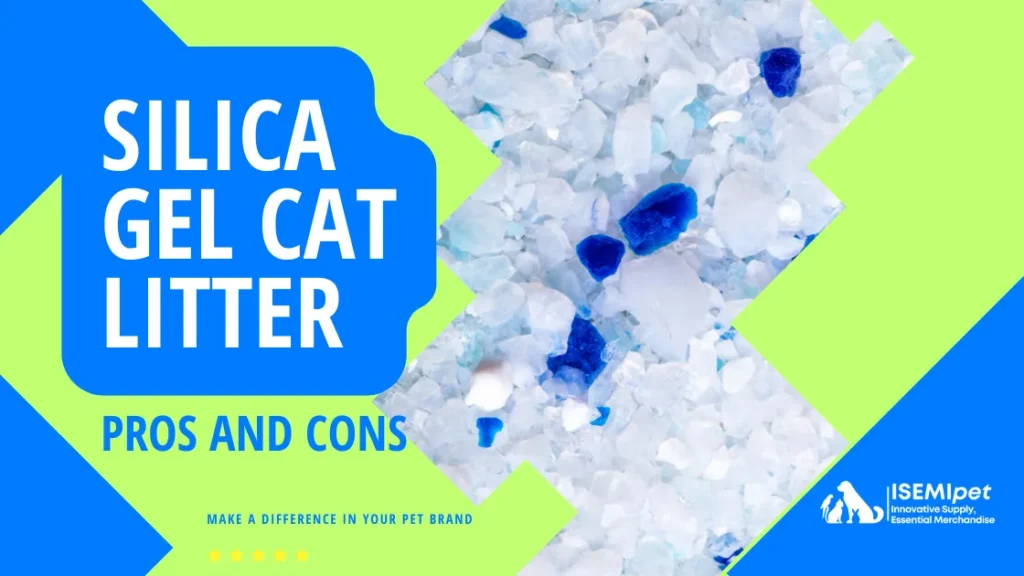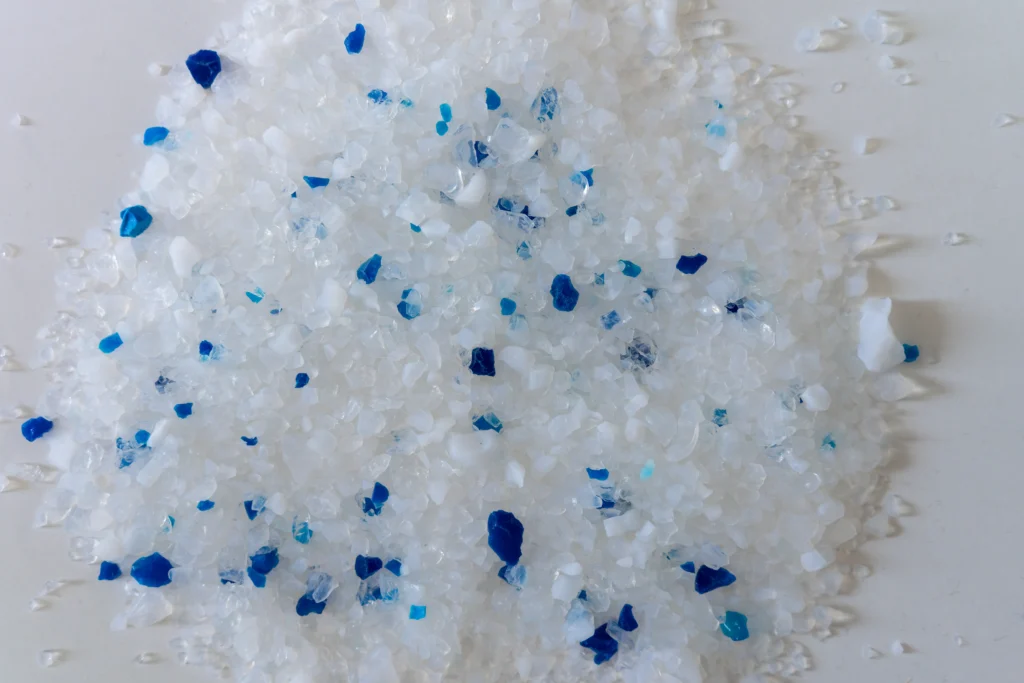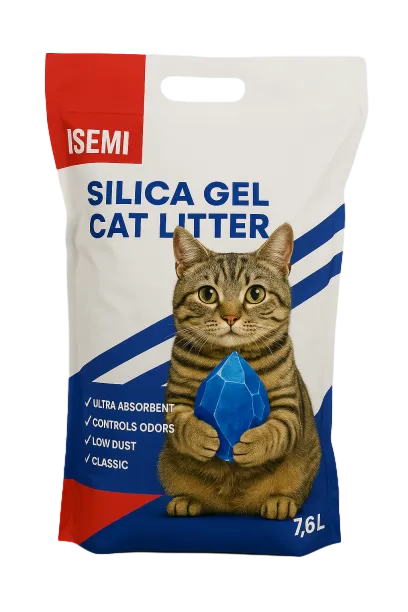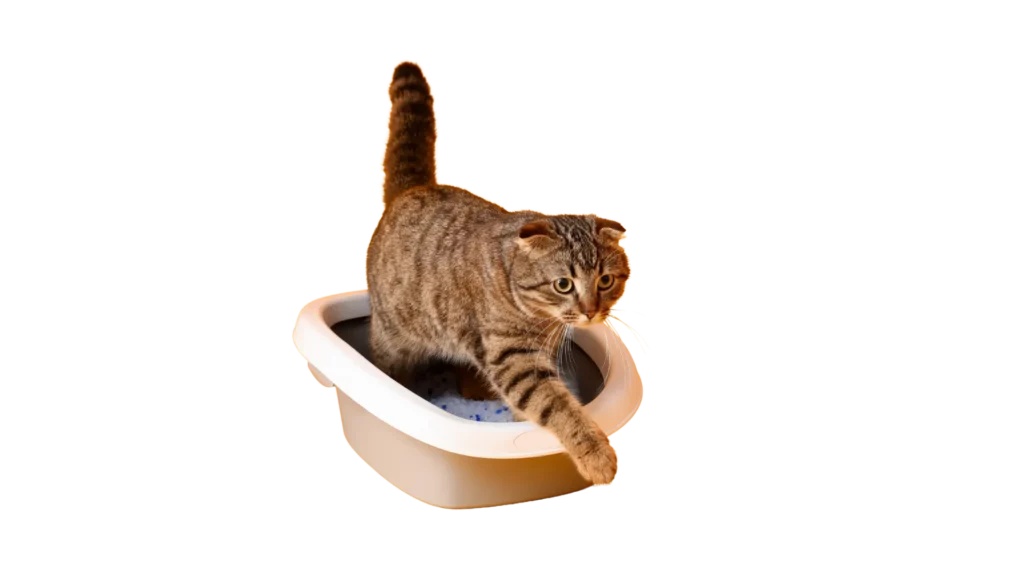Your competitors are customizing their pet supply chain.
Are you?
✔ Impress your customers with tailored pet products
✔ Impress your customers with tailored pet products
Silica gel cat litter—often marketed as crystal cat litter—has become a popular choice for cat owners and premium pet brands. Its strong odor control, long-lasting absorption, and low-dust formula make it an attractive alternative to traditional clay or plant-based cat litters.
But is silica gel cat litter suitable for every cat and every household? In this guide, you’ll learn what silica gel cat litter is made of, how it works, its pros and cons, and tips on selecting the right product—whether you’re a cat owner or a distributor looking to add a premium product to your catalog.

Silica gel cat litter is made from silicon dioxide—a highly porous material also used in moisture-absorbing packets for electronics and food.
When designed for cat litter, these tiny crystals or beads are safe for cats and highly effective at absorbing moisture and trapping odors.

Silica gel crystals effectively trap ammonia, preventing the spread of unpleasant smells for up to 30 days per cat.
Because it doesn’t clump, you don’t need to scoop wet litter daily. Simply remove solid waste and stir the crystals to redistribute moisture absorption.
High-quality silica gel cat litter undergoes dust-removal processes, making it ideal for cats with respiratory sensitivities or households with allergy-prone owners.
A 3.8L or 5L bag can last 3 to 4 weeks for one adult cat, reducing frequent litter changes and saving money in the long run.
Compared to heavy clay litter, silica gel cat litter is much lighter, making it easier to pour, store, and transport.
The large crystals are less likely to stick to a cat’s paws, reducing litter tracking around the house.

Unlike plant-based or tofu cat litters, silica gel cat litter is not biodegradable and must be disposed of with household waste.
Some cat owners prefer clumping litter for easier scooping. Silica gel cat litter absorbs liquid instead of forming clumps, which can take time to get used to.
Although it lasts longer, the upfront cost per bag is usually higher than clay or plant-based litter.
Kittens under 3 months may try to eat the crystals. While non-toxic, ingestion should be avoided.
Some color-changing formulas may vary depending on humidity levels, which can confuse owners about when to replace the litter.nd cleanliness, rather than price per kilo.
Silica gel cat litter is an excellent option for businesses that:
ISEMIPET provides export-grade silica gel cat litter with full OEM and private label support, helping brands and distributors strengthen their product portfolio.
Yes, it’s safe for adult cats. However, kittens should be monitored to avoid accidental ingestion.
A 3.8L bag typically lasts 3–4 weeks per cat, depending on usage and ventilation.
No, it is not flushable and should be disposed of with household waste.
It’s not biodegradable but produces less daily waste compared to clumping clay litter because it lasts longer.

ISEMIPET specializes in manufacturing and exporting silica gel cat litter with full OEM and private label solutions, offering:
When selecting silica gel cat litter, look for the following:
Prefer products labeled “99% dust-free” or tested for low particle emissions.
Premium formulas often include activated carbon or natural deodorizing additives.
High-quality crystals can absorb up to 300% of their weight in moisture.
Ensure the product is certified as non-toxic and safe for cats.
If you are a distributor or brand, look for OEM options such as customized bag sizes (3.8L, 5L, 10L) and private labeling.
✅ If your company wants to expand its premium pet product line, silica gel cat litter is an ideal addition. It delivers strong odor control, low dust, and long-lasting performance—features highly valued by demanding retail and distribution markets.
While not the cheapest or the most eco-friendly option, its consistent quality and market appeal make it a profitable choice for brands and wholesalers targeting premium segments.